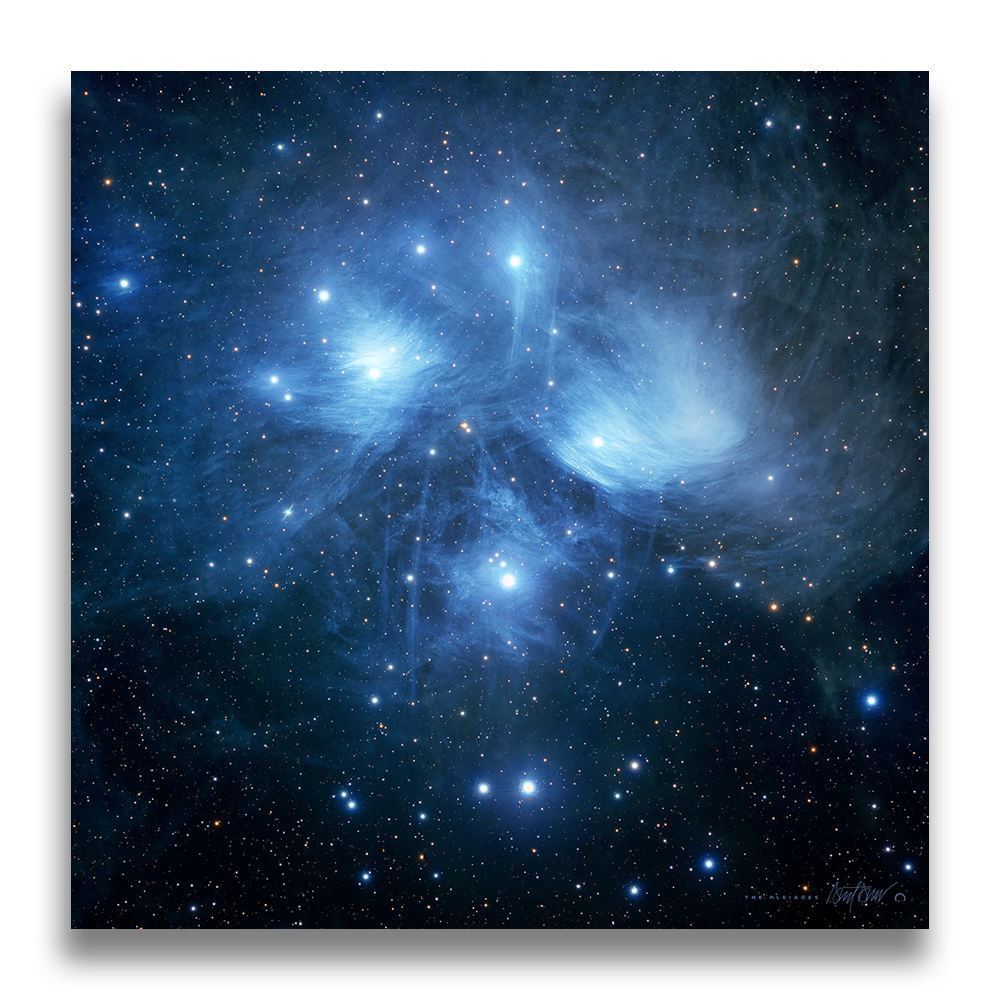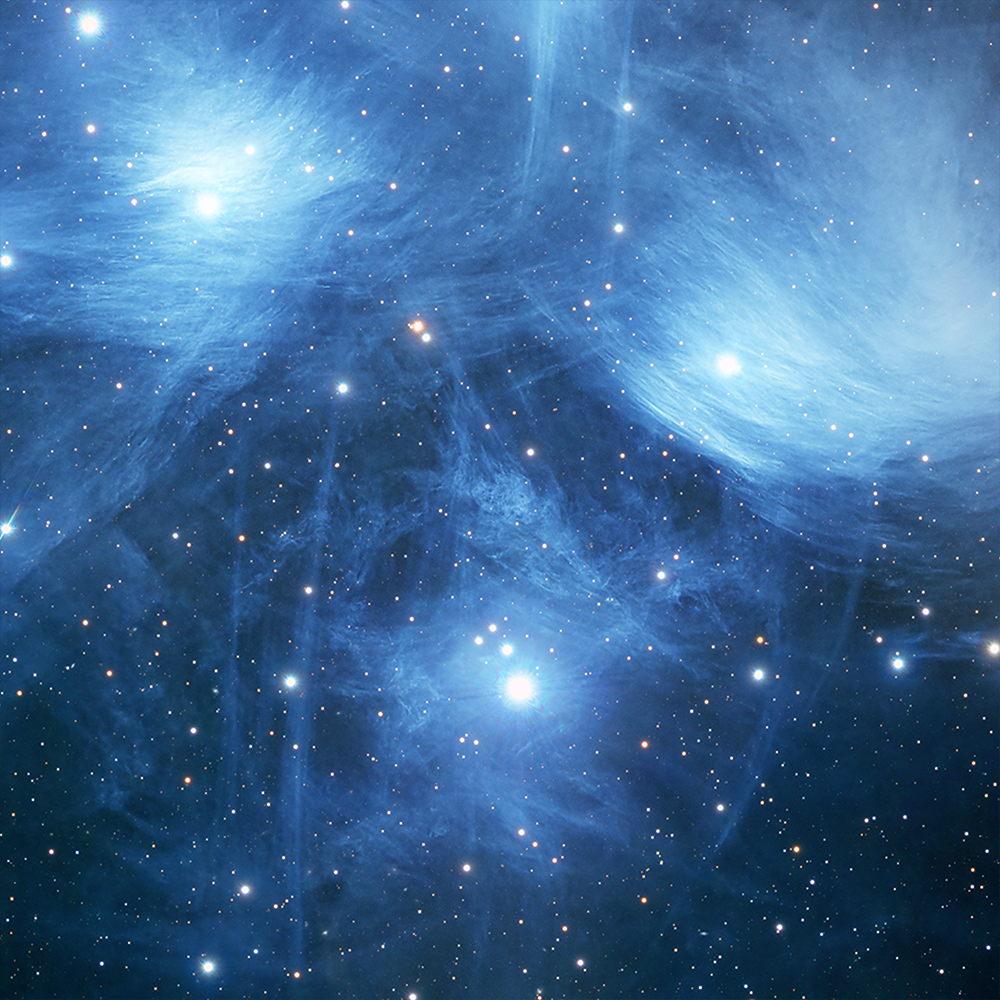

THE PLEIADES
Captured in a single night, thanks to its relative brightness, the Pleiades stands out as one of the most iconic star clusters in the winter night sky, just west of Taurus the Bull.
This well-known cluster has been revered across cultures for millennia, with the name "Pleiades" originally referring to seven divine sisters in Classical Greek mythology. The Māori, Australian Aborigines, Chinese, Mayans, Aztecs, as well as Native American cultures like the Sioux and Cherokee, all have their own unique names and rich mythologies surrounding this captivating star cluster.


